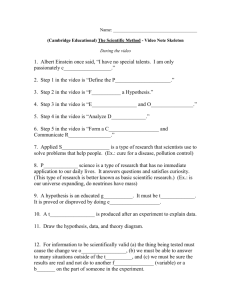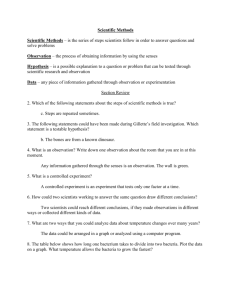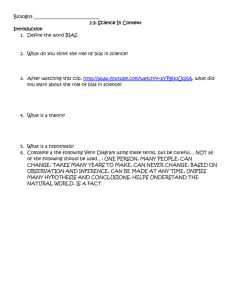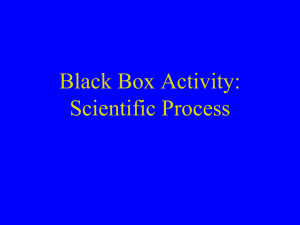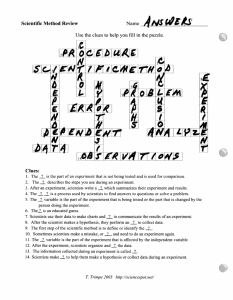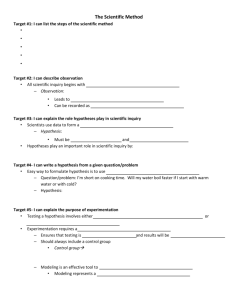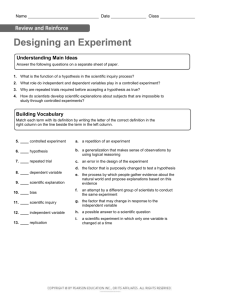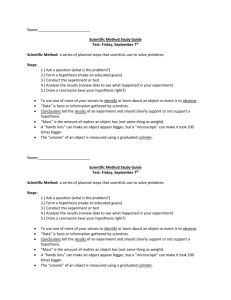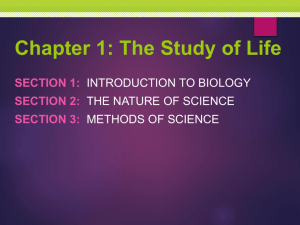Chapter 1 - St. Mary School
advertisement
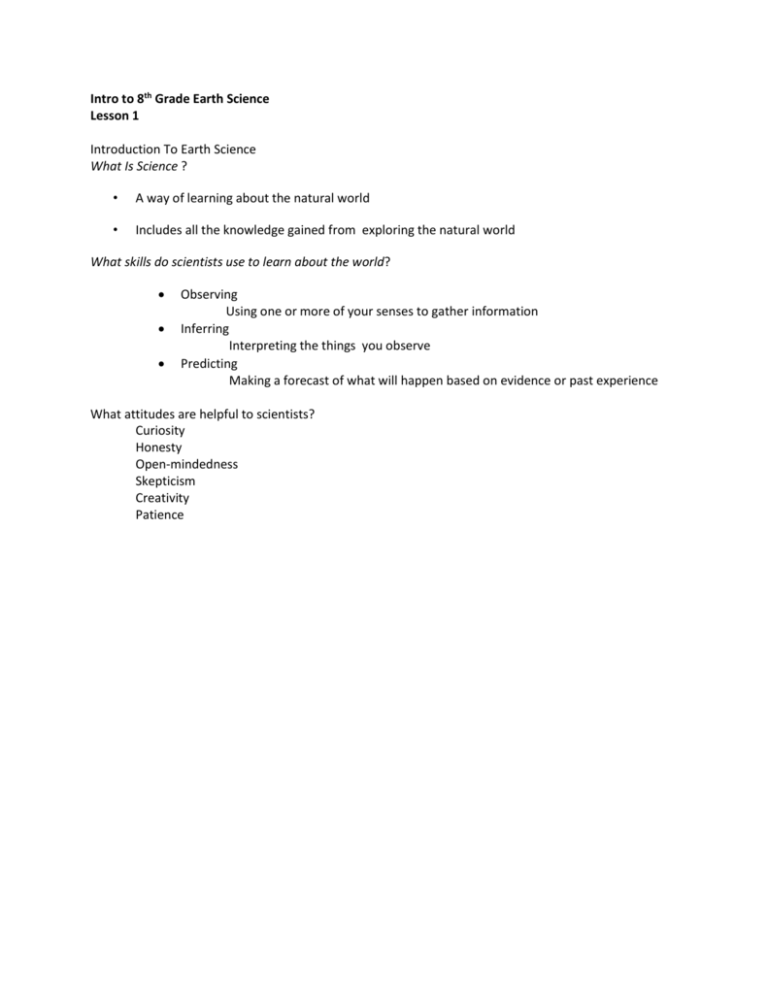
Intro to 8th Grade Earth Science Lesson 1 Introduction To Earth Science What Is Science ? • A way of learning about the natural world • Includes all the knowledge gained from exploring the natural world What skills do scientists use to learn about the world? Observing Using one or more of your senses to gather information Inferring Interpreting the things you observe Predicting Making a forecast of what will happen based on evidence or past experience What attitudes are helpful to scientists? Curiosity Honesty Open-mindedness Skepticism Creativity Patience Skills of a Scientist: Observe (use senses) Infer (Consider what you have observed and what your prior experience and knowledge is about the topic) Predict (When you tell what will happen based on your observations and inferences you may have drawn) Y Dependent Or Responding Variable (Changes due to what you have done) X Independent or Manipulated Variable (It’s the thing you change in the experiment) What is Scientific Inquiry ? Refers to the many ways in which scientists study the natural world and propose explanations based on evidence they gather Often begins with a problem or questions about an observation A means of testing a hypothesis A method for explaining the difference between a scientific theory and a scientific law The Scientific Method: Observation or question • Research • Forming a hypothesis • Designing an experiment • Recording data • Repeating the procedure Hypothesis A possible explanation for a set of observations or answers to a scientific question Must be testable May be revised or scrapped based on results Experiment • Designed to test a specific hypothesis • Must contain variables (factors that can be changed) • Independent (manipulated) variable is purposely changed to test the hypothesis • Dependent (responding) variable may change in response to the independent variable • An experiment where only one variable is manipulated at a time is called a controlled experiment Data • Facts, figures and other evidence gathered through observation • After gathering and interpreting data, scientists draw conclusions about their hypothesis • Scientists then communicate their results How do scientific theories differ from scientific laws? Scientific Theory A well-tested explanation for a wide range of observations or experimental results Scientific Law A statement that describes what scientists expect to happen every time under a particular set of conditions A scientific law describes an observed pattern in nature without attempting to explain it. Intermediate Science Lesson 2 Review: Scientific Inquiry Introduce: The Study of Earth Science Earth Science: A body of knowledge about Earth and its place in the universe Earth scientists use several main ideas to guide their work: 1. The structure of the Earth system 2. Earth’s history 3. Earth as part of the solar system The Earth system is made up of: Lithosphere Earth’s solid, rocky outer layer Hydrosphere Earth’s oceans, lakes rivers and ice Atmosphere Mixture of gases that surround Earth Biosphere Includes all Earth’s living things Earth’s History Two main forces have changed Earth’s surface throughout history: 1. Constructive Forces Build up mountains and landmasses 2. Destructive Forces Slowly wear away mountains and every other feature on Earth’s surface Branches of Earth Science Geology is the study of the forces that have shaped the Earth throughout its long history Oceanography is the study of everything from the chemistry of ocean water to the shape of the ocean floor to the living things in the ocean’s depths Meteorology is the study of information gathered about conditions in the atmosphere around the world Astronomy is the study of the solar system , stars, galaxies, and the history of the universe Environmental Science is the study of Earth’s environment and resources Use of Models Earth scientists often use models to represent complex objects or processes: physical-globe mechanical-robotic scale-map graphic-coordinate plane mathematical-formula computer simulation

